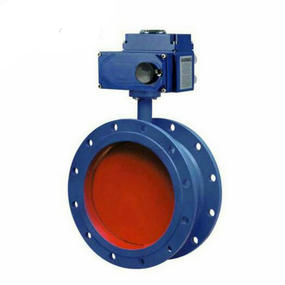The working principle of pneumatic ball valve is to rotate the valve core to make the valve unblocked or blocked. The pneumatic ball valve is light to open and close, small in size, can be made into a large caliber, reliable in sealing, simple in structure, convenient in maintenance, and the sealing surface and spherical surface are often closed, not easy to be eroded by media, so it is widely used in various industries.
Pneumatic ball valve and plug valve belong to the same type of valve, only its closing part is a ball, and the ball rotates around the center line of the valve body to open and close a valve. Pneumatic ball valves are mainly used in pipelines to cut off quickly, distribute and change the flow direction of media.
1、 Floating pneumatic ball valve
The ball of the pneumatic ball valve is floating. Under the action of the medium pressure, the ball can produce a certain displacement and press on the sealing surface at the outlet end to ensure the outlet end is sealed.
The floating pneumatic ball valve has simple structure and good sealing performance, but the load of the working medium borne by the ball is all transferred to the outlet seal ring. Therefore, it is necessary to consider whether the seal ring material can withstand the working load of the ball medium. This structure is widely used for medium and low pressure ball valves.
pneumatic valve
2、 Fixed ball pneumatic ball valve
The ball of the pneumatic ball valve is fixed and does not move after being pressed. All fixed ball valves are equipped with floating valve seats. The valve seats move under the pressure of the medium, making the seal ring tightly press on the ball to ensure sealing. Generally, bearings are installed on the upper and lower shafts of the ball, and the operating torque is small. It is suitable for valves with high pressure and large diameter.
In order to reduce the operating torque of pneumatic ball valves and increase the reliability of sealing, oil sealed ball valves have appeared in recent years, which not only inject special lubricating oil between sealing surfaces to form an oil film, which not only enhances the sealing performance, but also reduces the operating torque, and is more suitable for high pressure and large caliber ball valves.
3、 Elastic ball pneumatic ball valve
The ball of the pneumatic ball valve is elastic. The ball and valve seat seal ring are made of metal materials, and the sealing pressure is very high. The pressure of the medium itself cannot meet the sealing requirements, so external force must be applied. This valve is suitable for high temperature and high pressure media.
An elastic sphere obtains elasticity by opening an elastic groove at the lower end of the inner wall of the sphere. When closing the channel, use the wedge head of the valve rod to expand the ball and compress the valve seat to seal. Loosen the wedge head before rotating the ball, and the ball will return to its original shape, so that there is a small gap between the ball and the valve seat, which can reduce the friction and operating torque of the sealing surface.
Pneumatic ball valves can be divided into straight through type, three-way type and right angle type according to their channel positions. The latter two ball valves are used to distribute media and change the flow direction of media.

